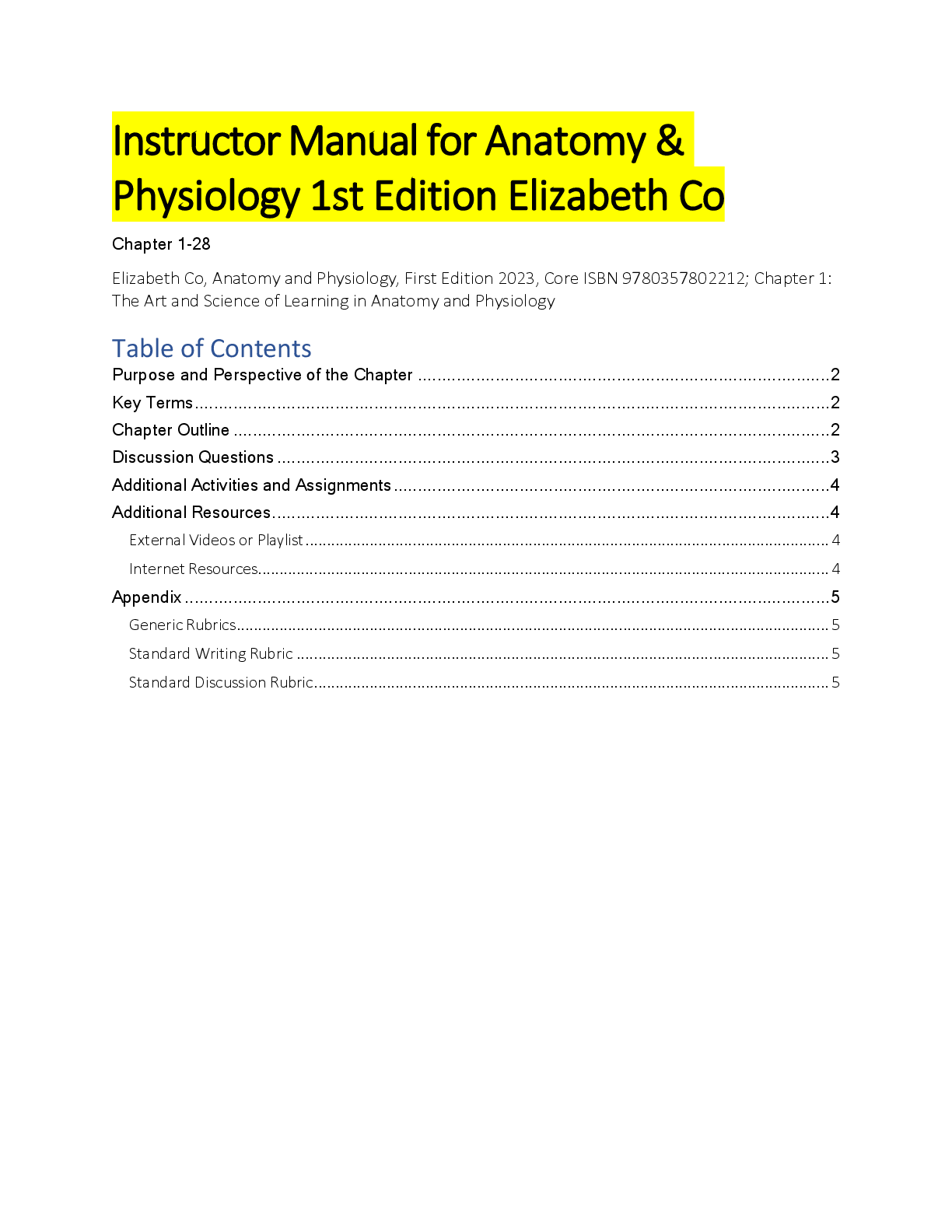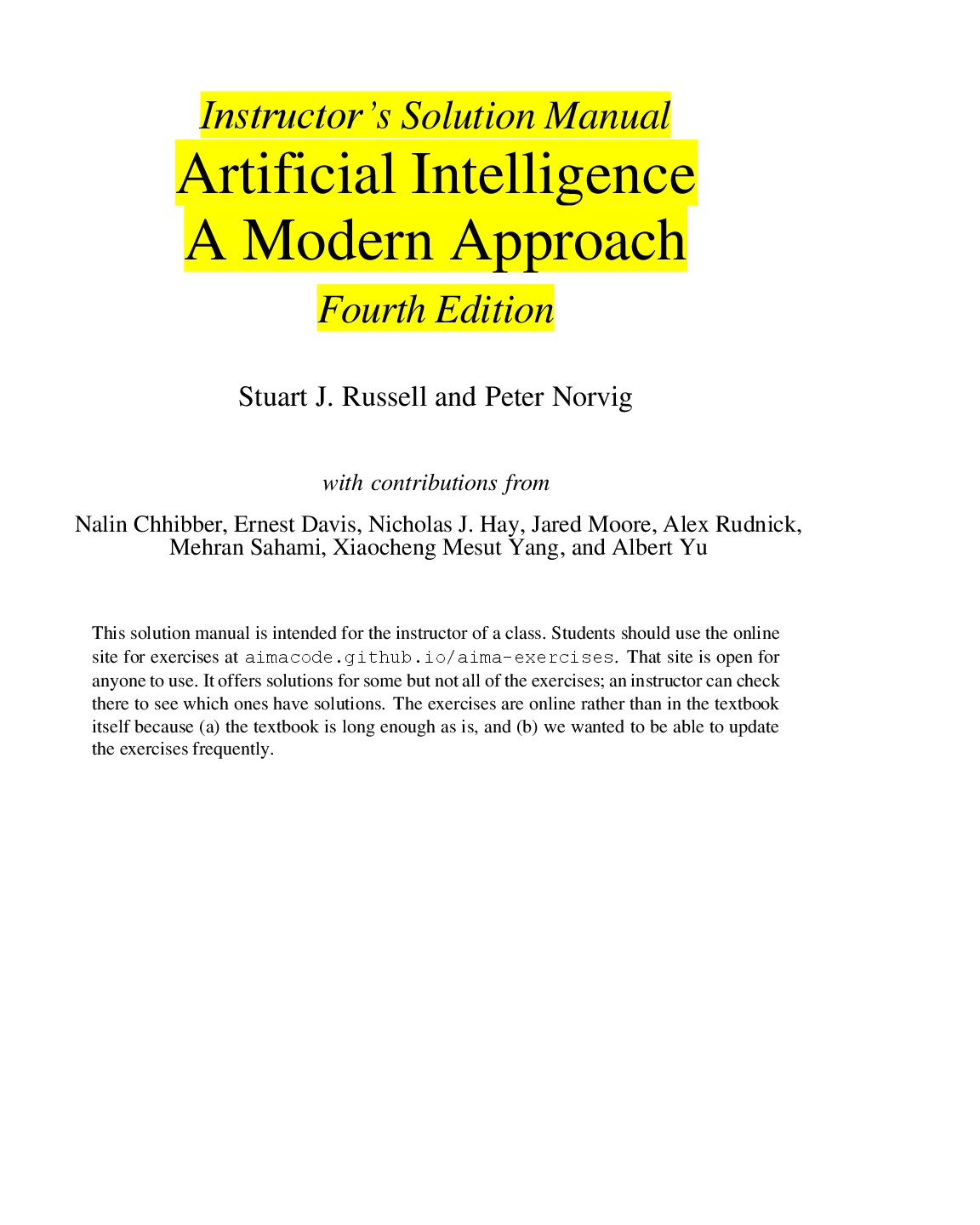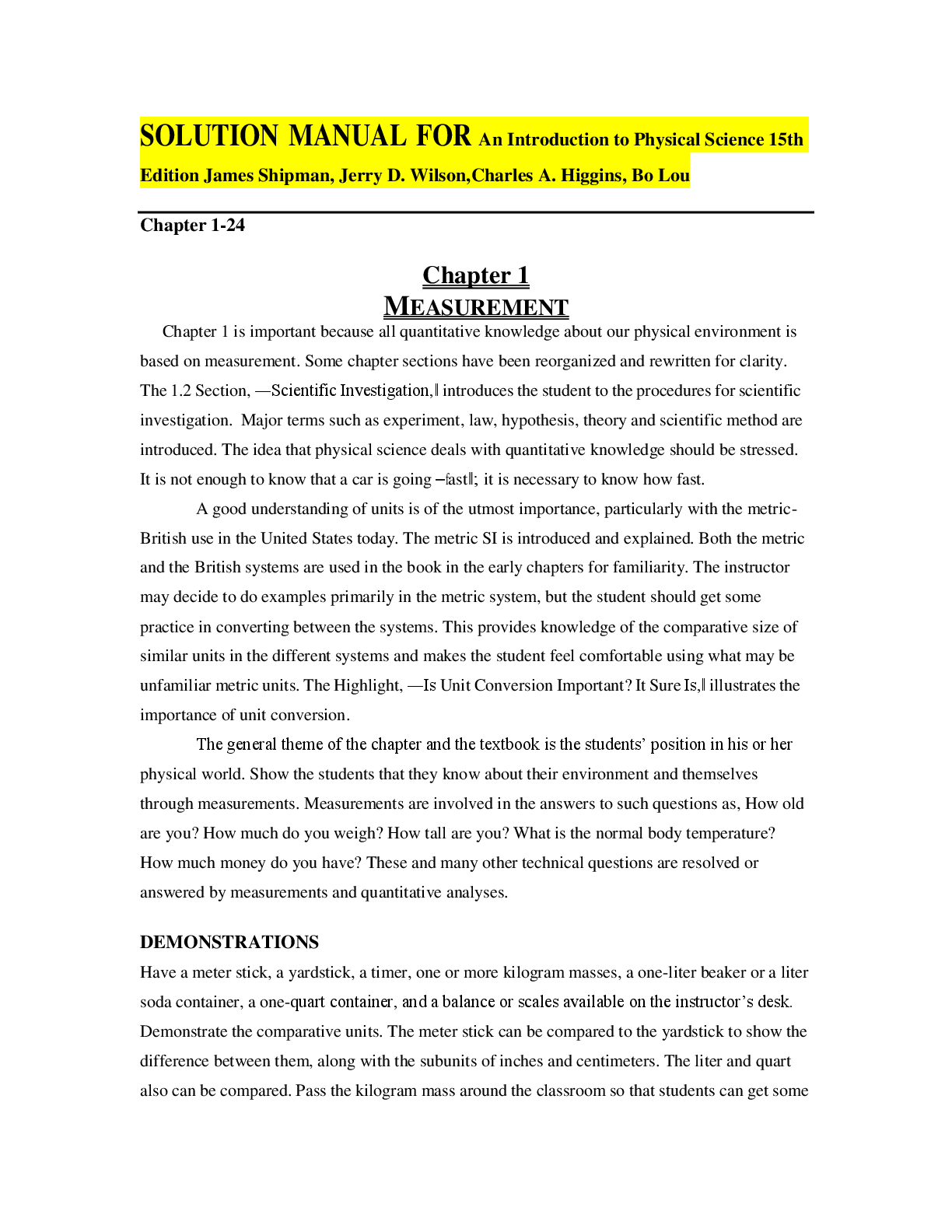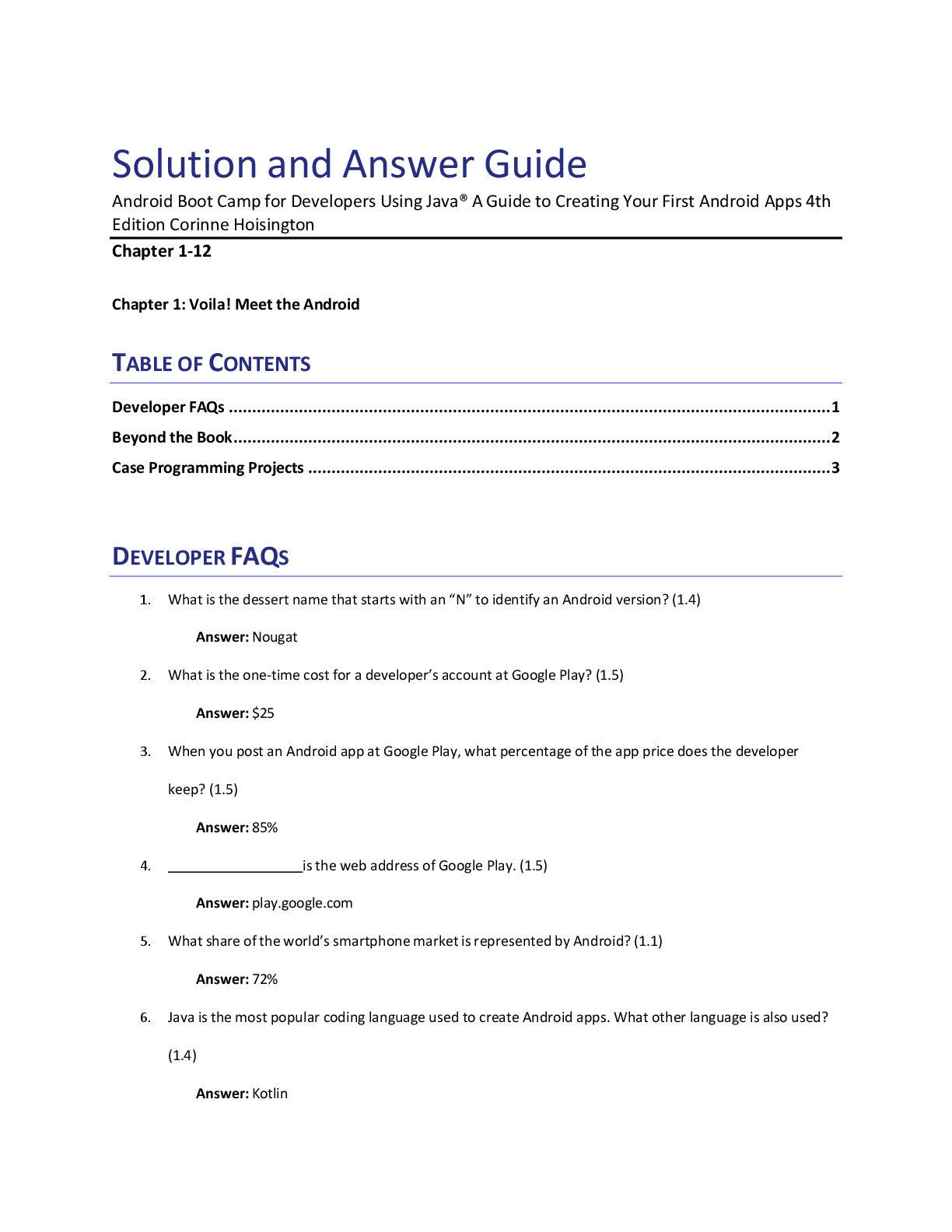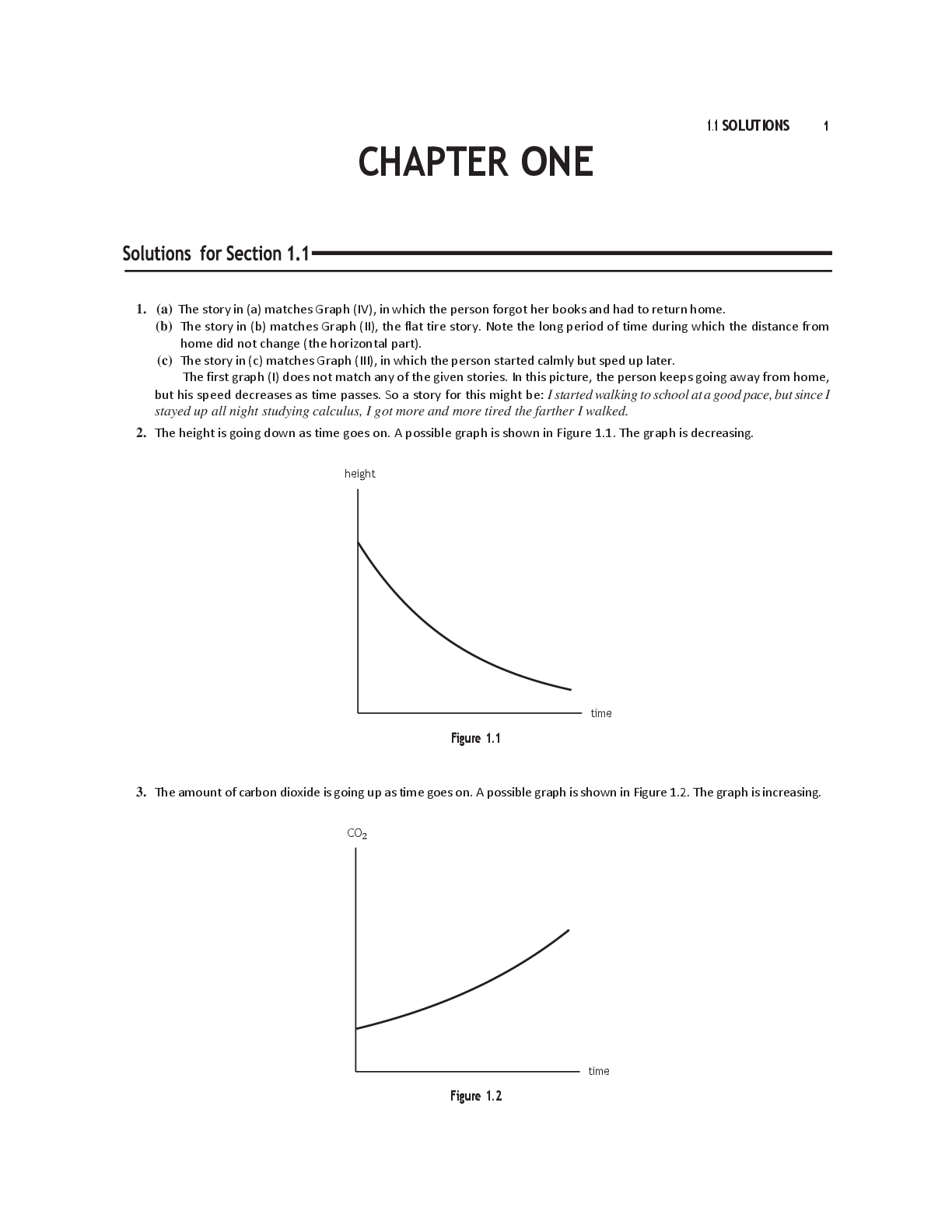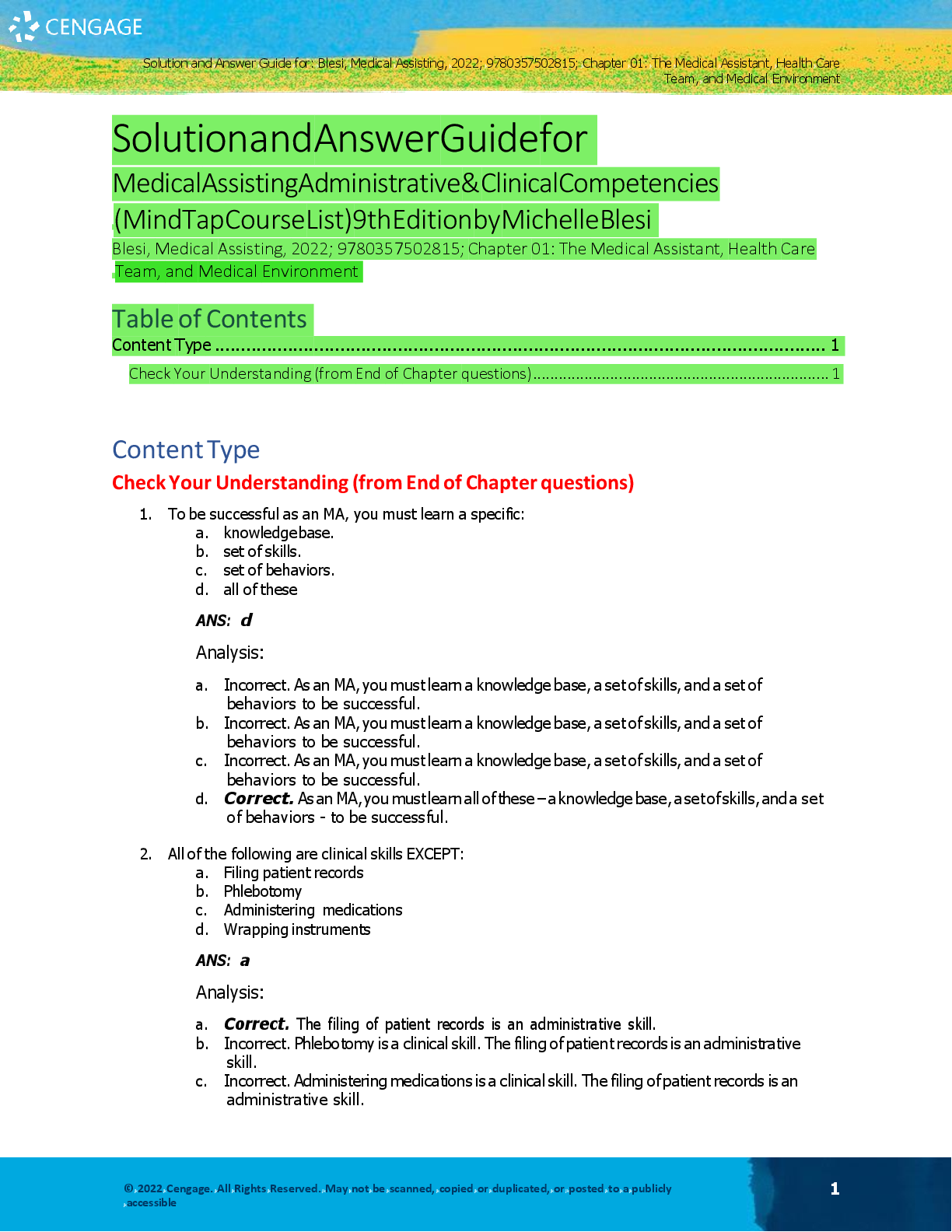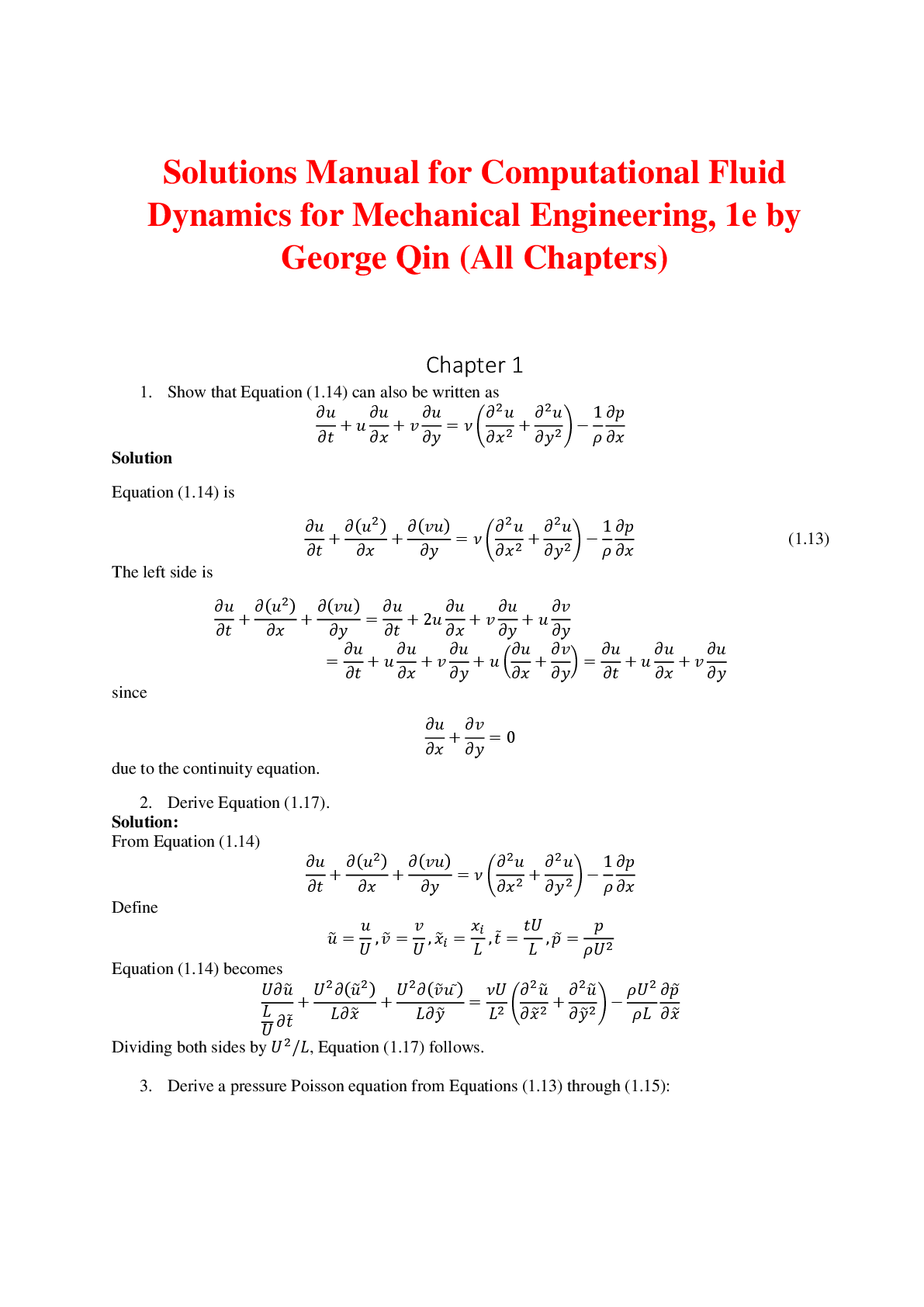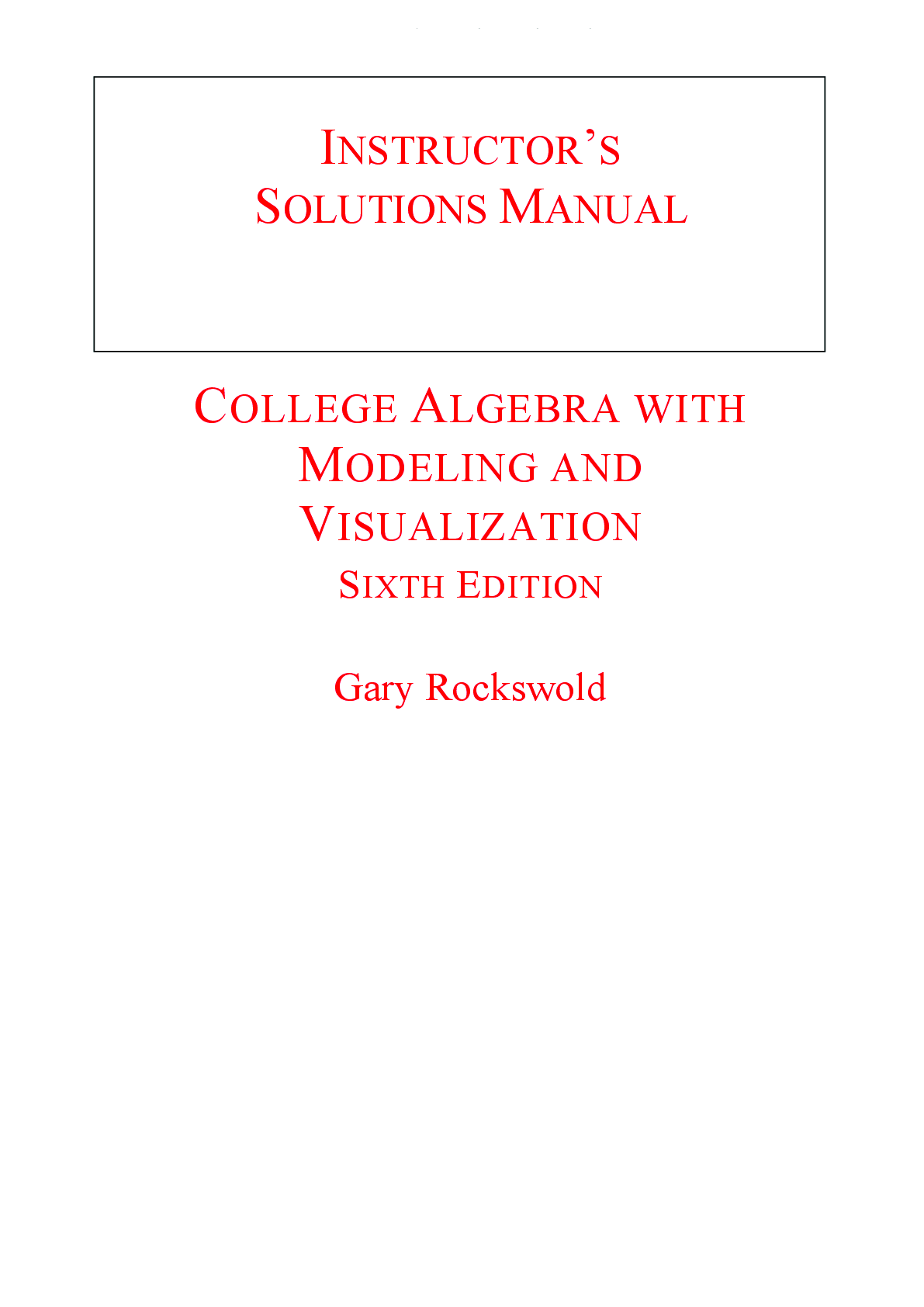Education > SOLUTIONS MANUAL > Solution Manual for Transportation A Global Supply Chain Perspective, 10th Edition by Robert A. Nova (All)
Solution Manual for Transportation A Global Supply Chain Perspective, 10th Edition by Robert A. NovackBrian GibsonYoshinori Suzuki
Document Content and Description Below
Solution Manual for Transportation A Global Supply Chain Perspective, 10th Edition by Robert A. NovackBrian GibsonYoshinori Suzuki-Transportation has sometimes been described as the glue that holds gl ... obal supply chains together. What is the meaning of this statement and do you agree? Why or why not? Solution: Most students will probably agree that transportation is the ―glue‖ of the supply chain since it connects the individual parts of the chain. Still, they should point out that information is also important to hold the supply chain together. The essence of the statement is that supply chains are extended enterprises with many parts, and the final outcome is a product delivered on time to a particular location without damage or delay. Transportation and information flows are key to this outcome. They should also point out that transportation and information can provide a strategic advantage, so they should be an important part of the planning process. Overall, supply chains play an important role in helping organizations gain a strategic advantage in the global economy of the 21st century. 2. During the last 20 to 30 years, there have been a number of countries whose economies have experienced important economic expansion and development. One group of countries has been labeled the BRIC countries and the other the VISTA countries. Identify each of the nine countries and provide some insights about their economies and economic importance. Solution: BRIC countries are Brazil, Russia, India, and China. The VISTA countries are Viet Nam, Indonesia, South Africa, Turkey, and Argentina. The BRIC group is generally considered to be the most advanced economy. China is clearly the most important, as indicated by the grade flow data in the chapter. They are important for manufactured production well as resources. India has advanced rapidly through their 2 educated and industrious citizens and technology, and organizations in India have become an important part of many supply chains. Russia and Brazil both have vast resources that can be the basis for funds, but they are also developing more advanced manufacturing sectors. They are challenged by their geography, size, and political factors. The VISTA countries have established themselves as countries for sourcing some basic manufacturing because of low labor costs. They also provide agricultural products and other resources for exporting. The key dimension for both the BRIC and VISTA countries is that establishing global supply chains has allowed them to be a part the global economies. There is abundant information about the BRIC and VISTA countries on the internet if you want to make this question a special assignment or extra credit. 3. The theories of absolute and comparative advantage have been offered as an economic rationale for trade between and among regions and countries. Compare and contrast the two concepts. Which of the two do you think is more important for explaining the growth in global trade during the last 25 years? Why? Solution: Both theories are offered as a rationale for expanded trade between and among regions and countries to promote growth and development. Absolute advantage is the oldest concept and easiest to explain, since each country has an advantage in the production of one or more products in the two-country scenario. Comparative advantage postulates that even if one country has an advantage in both products, trade can still be advantageous. Comparative advantage has probably been the most important for overall development in our complex global economy since countries can produce so many products that are competitive with other countries, to some degree. However, complete advantage is still important to rationalize some major work flows, especially for basic materials and agricultural products. There are also seasonal and weather-related factors that provide advantages at particular times of the year for different regions. 4. The overall growth of global trade has more than doubled since 2000. Why? What has been the most important factor prompting this growth? Is this rate of growth likely to continue in the future? Why or why not? Solution: There are several reasons for this growth. Some of it can be explained by population growth and improved education systems in developing countries. Capital for development has become more widely available from private and public sources. There is also more acceptance of products manufactured in other countries. But probably the most important reasons are trade agreements and lower tariffs on imported products. These have been greatly expanded because of the recognition of how important global trade can be to economic development and the health and welfare of the citizens of the country. One of the biggest challenges to progress in promoting global trade is the political instability and terrorism that have developed in some areas of the world, such as Africa and parts of the Middle East. These factors undermine the benefits that can accrue from the growth in global trade. One can argue that the growth will continue because of the economic and political forces at work in the global economy, but there will be ups and downs or bumps along the road because of human error and greed. 5. The size of a country’s population and the associated age distribution can be causal factors for economic growth. Why is the size of the population important to economic development? Can size be a disadvantage? Why is age distribution important? Solution: The sheer size of the population can be very important because labor is one of the prime factors for economic growth, and population numbers indicate the availability of labor. The size of the population can also indicate the market size and potential for selling products. Size can be a disadvantage if the economy cannot provide employment opportunities. Large size can also challenge the education system and may require government resources to sustain the basic needs of the citizenry. Age distribution affects the size of the labor pool of available employees. Also, older populations require more medical assistance and other services, which can drain the resources of individuals or government agencies. The population data and commentary in the chapter provide the basis for some interesting discussion. Again, this topic has abundant [Show More]
Last updated: 9 months ago
Preview 5 out of 77 pages

Loading document previews ...
Buy this document to get the full access instantly
Instant Download Access after purchase
Buy NowInstant download
We Accept:

Reviews( 0 )
$14.50
Can't find what you want? Try our AI powered Search
Document information
Connected school, study & course
About the document
Uploaded On
Apr 03, 2025
Number of pages
77
Written in
All
Additional information
This document has been written for:
Uploaded
Apr 03, 2025
Downloads
0
Views
23





